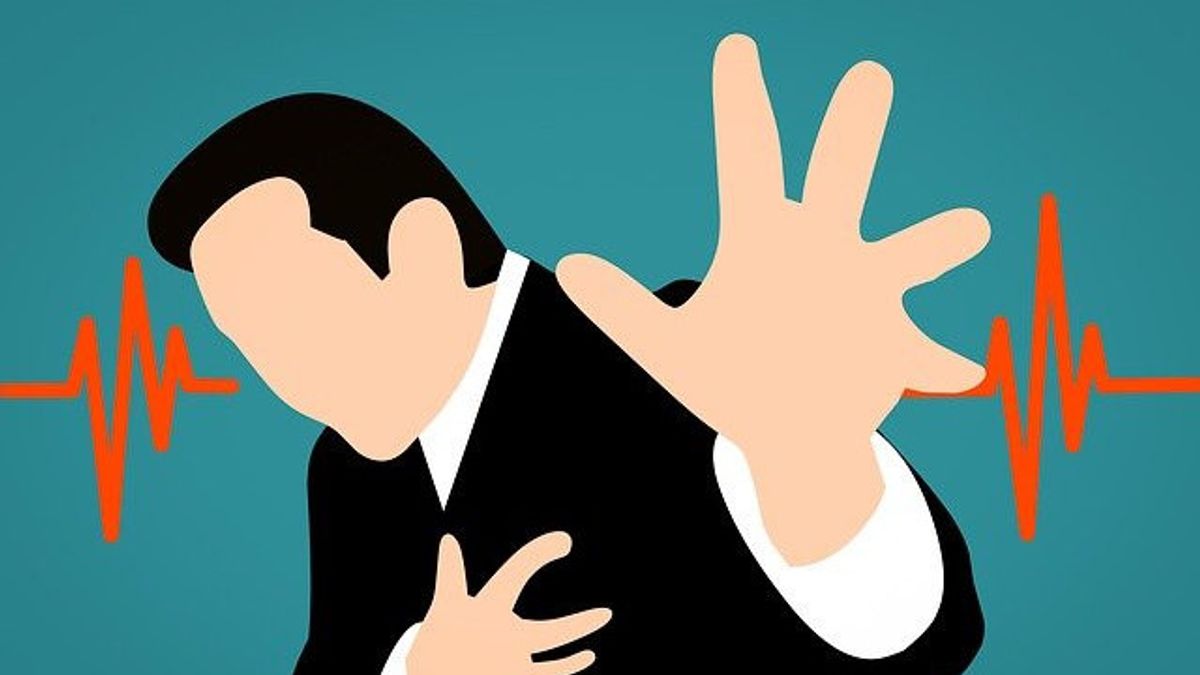JAKARTA - Patients with heart failure generally feel a number of complaints due to the heart being no longer able to carry out its vital functions, including pumping blood, namely fatigue and shortness of breath. When the heart's ability to pump blood is reduced, the patient can't get oxygen to the tissues and organs so he complains of fatigue.
Head of the Working Group (Pokja) on Heart Failure and Cardiometabolic Indonesian Cardiovascular Specialist Doctors Association (PP PERKI), dr. Siti Elkana Nauli, SpJP(K), FIHA, FAsCC, FHFA said that the heart's capacity to receive blood is reduced due to increased pressure on the failing heart, it will cause fluid accumulation in various organs such as the lungs, liver, stomach, kidneys and when it is heavy on the legs and thighs.
According to Siti, the accumulation of fluid in the legs indicates that the patient is too late to ask for help due to a heart failure condition.
"If you get tired easily and shortness of breath increases, it means that the accumulation of fluid that has arisen in the lung cavity has occurred so much," said Siti, quoted from ANTARA, Sunday, January 30.
Siti explained the heart has two vital functions, namely in the exchange of oxygen with carbon dioxide which involves the right side of the heart and lungs and pumping blood throughout the body to be able to meet the needs of each organ when a person performs activities or metabolism at rest.
Therefore, when the heart malfunctions, the patient may complain of fatigue, shortness of breath, especially at rest and activities.
VOIR éGALEMENT:
In addition, at bedtime, patients generally need more than one pillow. Some patients even choose to sleep in a sitting position, feel no appetite, drink and eat a little, and are full because there is a buildup of fluid in the digestive tract. In advanced conditions, the swelling has arisen not only in the abdomen but also in both legs.
Then, there are also some signs that are sometimes not realized, such as easy dizziness due to disturbances in brain circulation due to a weak heart pump or not getting blood to the brain properly and patients often wake up in the middle of the night because they feel short of breath, like drowning. In some conditions, a dry cough appears that cannot be treated with cough medicines that have been consumed.
Siti said the condition of heart failure could be related to several other related conditions, such as circulatory failure so that patients feel weak, the tips of the hands and feet feel cold, kidney failure, stroke, arrhythmia, or heart rhythm disturbances and the most cases are the cause of death in heart failure, namely sudden death.
Heart failure is characterized by high rates of repeated hospitalizations due to the worsening of the disease. If not treated properly, the global mortality rate from this disease is expected to increase to more than 23.3 million deaths annually by 2030.
The risk of heart failure is increased in conditions of hypertension, coronary heart disease, diabetes, family history of cardiomyopathy, exposure to toxins, valvular heart disease, thyroid function disorders, smoking habits, and metabolic syndrome.
Based on the Pokja heart failure registry data, the largest contributors to heart failure in Indonesia are coronary heart disease, hypertension, and diabetes.
Meanwhile, additional risk factors such as obesity, dyslipidemia, impaired kidney function, a relaxed lifestyle, and obstructive sleep apnea.
In Indonesia, based on data from 2130 patients from 11 cardiac service centers, especially on the islands of Sumatra and Java, it is estimated that the prevalence of heart failure patients is close to five percent, or above Singapore and Malaysia which is at 4.5 percent.
"This is still a big enough homework for us to be able to overcome or reduce the prevalence of the heart failure rate," said Siti.
This figure is no different from the results of a study entitled "Heart failure across Asia: Same healthcare burden but differences in organization of care" published in the International Journal of Cardiology. The study also revealed that the number of people with heart failure in Indonesia is 5 percent of the total population.
The death rate due to heart failure in Indonesia is also relatively high, namely 17.2 percent of heart failure patients in Indonesia die during hospitalization, 11.3 percent die within 1 year of treatment, and 17 percent experience repeated hospitalization due to worsening of symptoms and signs of heart failure.
Regarding the prevalence of heart failure, the Chairman of the Indonesian Cardiovascular Specialist Doctors Association (PP PERKI), dr. Isman Firdaus, Sp.JP (K). FIHA, FAsCC, FAPSIC, FESC, FSCAI, believes in the importance of the role of all stakeholders to work together on an ongoing basis in promotive, preventive, diagnostic, and treatment efforts for better management of heart failure.
In addition, it is important for people to prevent heart failure by starting a healthy life by eating healthy foods, exercising regularly, and consulting with doctors about the appropriate management of heart failure risk factors.
It is also important to check your heart health early, especially if there are complaints of chest pain, palpitations, easy fatigue, swollen legs, or shortness of breath. The heart and blood vessel specialist or cardiologist will perform an initial non-invasive cardiac examination such as echocardiography, Holter, or treadmill test.
The English, Chinese, Japanese, Arabic, and French versions are automatically generated by the AI. So there may still be inaccuracies in translating, please always see Indonesian as our main language. (system supported by DigitalSiber.id)

















